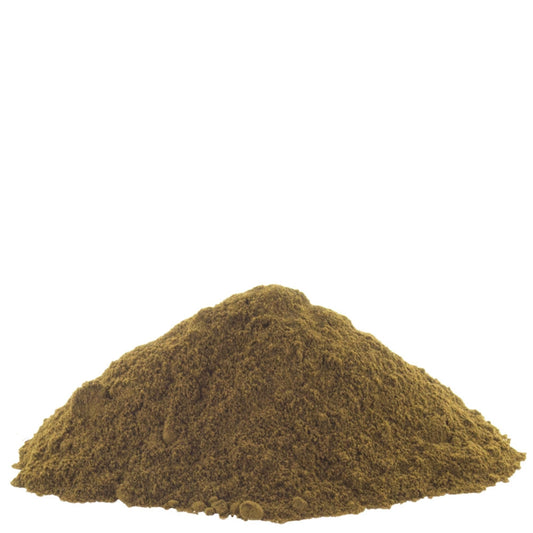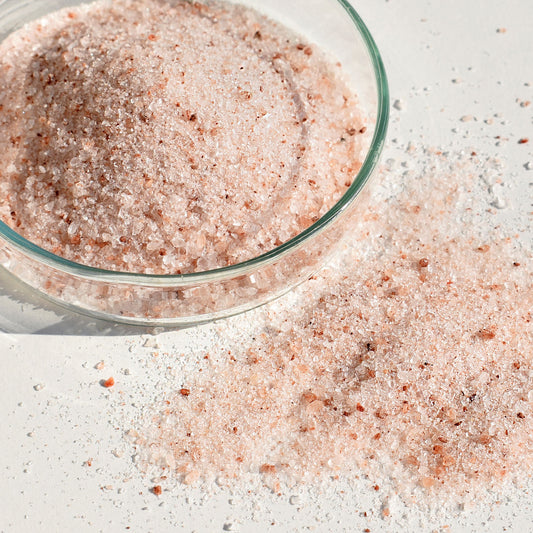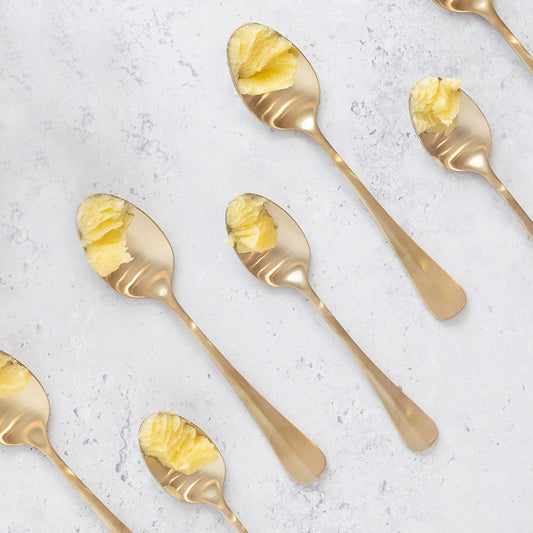Pippali or Piper longum is a small shrub and grows all over the tropical forest of India. It has a special affinity for the respiratory system, and it also supports the digestive, reproductive, circulatory, and nervous systems.
Commonly known as long pepper, pippali is the fruit of the plant (although sometimes referred to as the flower) and one of the most precious herbs in Ayurveda and Indian cuisine. In its dry form, pippali has a pungent or sharp taste. Its energy, or virya, is mildly heating, and it has a sweet post-digestive effect, which is soothing and balancing. It pacifies vata and kapha and even though it is pungent and heating, it is fine for pitta if used short-term and in moderation. It has oily, light, and penetrating qualities.
In its fresh green form, pippali has the opposite qualities that are found in the dried form. When green, it is sweet in taste, it can aggravate kapha and reduce pitta, and it is heavy, which makes it harder to digest.
Pippali in the Kitchen
While pippali is a true pepper, it is considerably less hot than many ground pepper varieties. At the same time, it is deeply aromatic and energizing. It's a tasty addition when cooking poultry, fish, and vegetable stews or dals.
Since ancient times, long pepper has been used in cooking for its hot and spicy flavor. Its popularity in the kitchen has decreased because black pepper and chili pepper are cheaper and easier to grow. On the other hand, those who understand the value of pippali continue using it in different recipes including some desserts because it has a sweet aftertaste and aids in digestion.
Toor Dal & Pippali Soup
Pippali is also used in healing foods. This soup recipe is a good addition to a meal as an appetizer, promoting healthy digestion and robust agni.
Ingredients:
- 1 ripe medium tomato, finely chopped
- ¼–½ teaspoon pippali powder
- 1–2 cloves of garlic, minced
- 1 teaspoon cumin seeds
- ½ cup chopped cilantro
- 1 tablespoon tamarind concentrate
- 1 teaspoon mustard seeds
- 4 curry leaves
- 1 tablespoon brown sugar
- 1 cup cooked toor dal
- 3 cups water
- ½ teaspoon salt
- 2 tablespoons ghee
Directions:
Combine the pippali, cumin seeds, and garlic together and set aside.
Heat the ghee in a pan over medium heat. Add the mustard seeds and when they pop add the curry leaves. Add the crushed pippali, cumin, and garlic mixture and a pinch of salt, and sauté till the spices are aromatic. Add about 3 cups of water, gradually add the chopped tomato and tamarind concentrate, mix well, then add the brown sugar and stir. Let it simmer on medium low till the tomato is cooked.
Adjust salt to taste, add the cooked and mushed toor dal, chopped cilantro (reserve some for garnish, if preferred), and stir well, letting the soup simmer till it becomes creamy. Garnish with cilantro and enjoy.
Sweet & Spicy Fruit Truffles
This is a simple and delicious seasonal dessert recipe. It also works well as a snack. In addition to being nourishing, it's also a good digestive aid for the winter season.
Ingredients:
- 1 cup chopped pitted dates
- ½ cup chopped dried figs
- ½ cup chopped almonds that have first been soaked and peeled
- ½ cup roasted cashews
- ½ cup honey
- ½ cup roasted sesame seeds
- ¼ cup coconut oil
- 2 teaspoons pippali powder
- 1 teaspoon nutmeg powder
Directions:
Chop the dates and figs into small pieces and combine in a bowl. Chop the almonds and lightly roasted cashews into very small pieces and add to the bowl. Mix and massage all the ingredients with the hands while adding the coconut oil. This will make a sticky paste. Then add half of the honey and mix well. Add the pippali and nutmeg powders and thoroughly combine all the ingredients.
Roll the mixture into bite size balls. Add a little honey on the surface of each ball and roll in the roasted sesame seeds. Place the balls on a baking sheet and refrigerate for 15 minutes or until they become firm. Once they have set they are ready to be served. Left overs can be kept in a covered container at room temperature for up to ten days.










